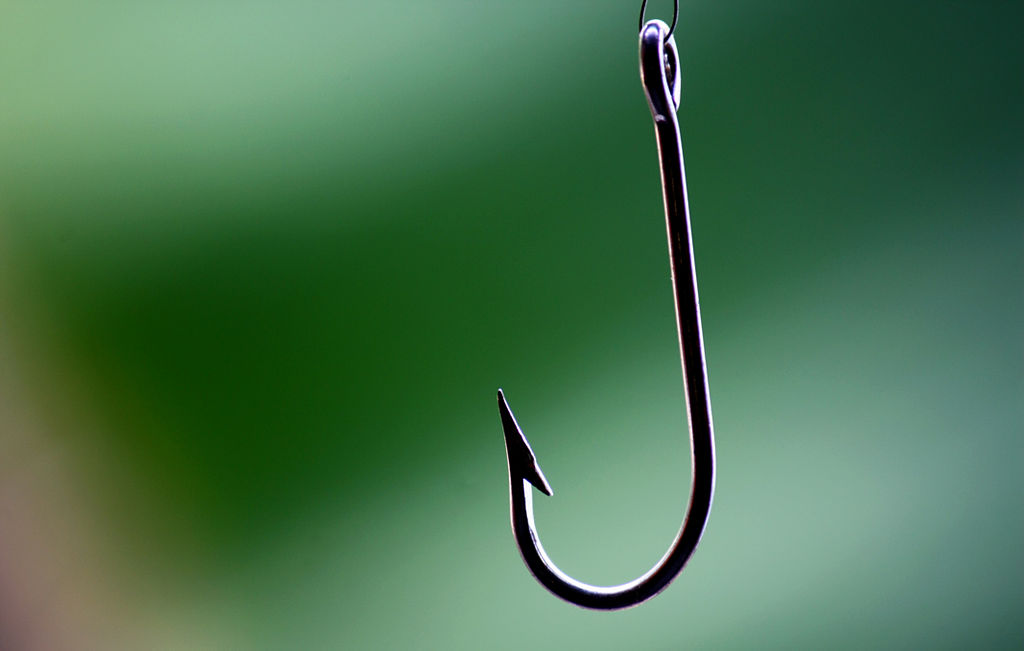Everything you need to know about fishhooks

When it comes to what’s on the end of the line, there is rarely a consensus over what the best possible hook for any given purpose might be. Fishhooks come in a whole range of differing types, and while some of them are really quite similar, many are vastly different from each other. At times, this can make hook selection a mind-boggling process.
Hopefully, the following facts on sizes and patterns of fish hooks will help you when choosing the best match for the fishing at hand.
Pattern/Bend

A pattern is simply the name given to the style of the hook, and the pattern is often defined by the type and function of its bend. The bend is the name for the curved part of the hook that creates a semi-circle between the shank and the point. The bend of the hook is a major determining factor regarding the strength of the hook. A well designed hook from a reputed maker will only bend so much and should resist bending beyond a certain point: good hooks are made to deal with the force involved when a fish is fighting for its life and will bend instead of snapping.
This property to bend and not break is closely related to the style and size of the hook itself. The type of forging process involved in the manufacture of the hook is key, as is the relationship between the gap and bite. The gap refers to the distance between the edge of the point and the longer length of the hook known as the shank, whereas the bite or throat is the distance from the gap to the peak of the bend, or the center of the curved part of the hook, the depth of the curve if you like. Most hooks come with a deep throat or bite and have a wide enough gap to enable the hook to keep hold of the fish once it’s hooked.
Common patterns
Following is a list of a number of common patterns and their applications and attributes:
- Sproat: This type of hook has a rather distinctive straight point. Popular baits used with this hook are flies and lures.
- Kirby: If the point of the hook is a bit offset then it is most definitely a Kirby hook. The offset point prevents the hook from slipping out of the flesh once it’s penetrated, and is considered ideal for bait fishing.
- O’Shaughnessy: This hook pattern is renowned for its wide range of applications due to its ability to hold a heavier line, as the hook bends outwards towards the tip of the point.
- Aberdeen: The Aberdeen is ideal for use with bait such as minnows. It has a round bend and is used mainly with a lighter line. The nature of this pattern is that it will bend a lot before breaking.
- Carlisle: This type of pattern is stronger than the Aberdeen pattern and has a much longer shank which prevents the fish from swallowing the hook along with the bait.
- Siwash: Mostly used with heavy wire, Siwash pattern hooks have a stronger and much longer point which offers good retention ability, hence it’s reputation for catching big and active fish.
- Salmon Egg: Not amongst the most famous of the patterns, the Salmon Egg pattern has a smaller and shorter shank which is concealed by the small bait hooked onto it.
Size/Temper/Gauge

Regardless of the type of pattern, hooks are all classified with respect to size: the size in principle is the width of the gap of the hook. However, this is a rather relative definition of size and there is no absolute standard for hook sizes. Even within a given type of hook the gap width may vary significantly.

Despite the fact that it isn’t given much heed when it comes to defining the size to a hook, the diameter of the wire used in its manufacturing has a significant bearing on its overall performance and usability. A specific diameter of wire is achieved by first taking a steel wire rod and then reducing the rod to a particular gauge consistent with a particular pattern. This is done by pulling the wire through a series of ever smaller holes, reducing the gauge up to 90 percent.
If the aim is to make a hook with the ability to penetrate fast and deep into a larger fish, then a heavy wire is used. A much lighter wire is used to make hooks that will use lighter line for angling with delicate and smaller baits. Medium gauge wire tends to be used for general purpose hooks and could be used for any of the above mentioned purposes according to one’s requirement.
If you have any comments then please drop us a message on our Outdoor Revival Facebook page
If you have a good story to tell or blog let us know about it on our FB page, we’re also happy for article or review submissions, we’d love to hear from you.
We live in a beautiful world, get out there and enjoy it. Outdoor Revival – Reconnecting us all with the Outdoors.
